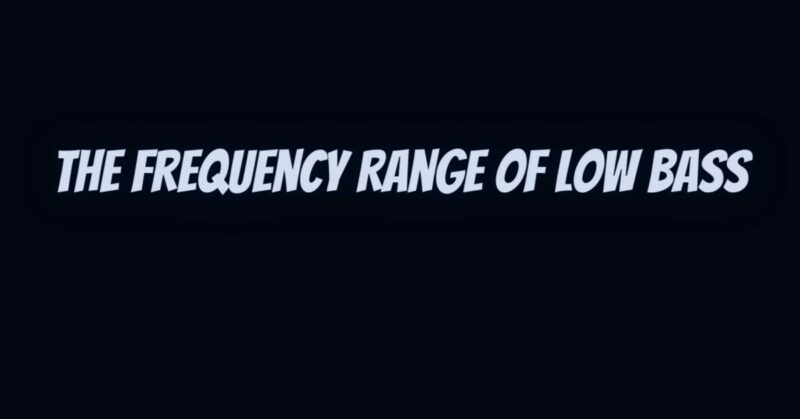Bass frequencies are the heartbeat of music, providing the foundation and resonance that can be felt as much as heard. Within the realm of bass, there’s a specific subset known as “low bass,” which delves into the deepest and most subsonic regions of sound. In this article, we will explore the frequency range of low bass, its significance in music and audio production, and why it’s a critical component for an immersive auditory experience.
Defining Low Bass
Frequency Range: Low bass refers to the portion of the audio frequency spectrum characterized by the lowest frequencies. While there is no universally agreed-upon cutoff point, low bass generally encompasses frequencies below 60 Hz and can extend down to subsonic levels below 20 Hz.
Sub-Bass: The term “sub-bass” is often used interchangeably with low bass and specifically refers to the lowest frequencies within the audible range, typically ranging from 20 Hz to 60 Hz.
Significance of Low Bass
Low bass frequencies play a vital role in music and audio production for several reasons:
1. Impact and Emotion:
Low bass frequencies can elicit strong emotional responses and physical sensations. The deep, resonant thump of a bass drum or the rumble of a sub-bass synthesizer note can create a visceral connection with the music.
2. Foundation and Groove:
Low bass provides the rhythmic and harmonic foundation for many musical genres, including hip-hop, electronic dance music (EDM), dubstep, and reggae. It anchors the groove and drives the music forward.
3. Cinematic and Immersive Sound:
In film and video game soundtracks, low bass frequencies are used to create tension, suspense, and a sense of scale. They add depth and realism to explosions, earthquakes, and other impactful moments.
4. Subwoofer Emphasis:
To fully appreciate low bass frequencies, a subwoofer or a speaker system with dedicated low-frequency drivers (woofers) is often required. These components are specifically designed to reproduce the deepest frequencies accurately.
Challenges and Considerations
While low bass can enhance the listening experience, it also presents some challenges:
1. Room Acoustics:
Room acoustics can significantly affect the perception and reproduction of low bass frequencies. Improper room setup, reflections, and standing waves can result in uneven bass response.
2. Subwoofer Placement:
Proper placement of subwoofers within a room is crucial for achieving even bass distribution. Subwoofers are often positioned away from walls and corners to minimize bass build-up and interference.
3. Equipment Quality:
High-quality subwoofers and speakers with low-frequency capabilities are essential for accurately reproducing low bass frequencies without distortion or muddiness.
4. Recording and Mixing:
In music production, capturing and mixing low bass frequencies can be challenging. Producers and engineers use specialized tools and techniques to ensure that low bass is balanced and powerful.
The frequency range of low bass is a fundamental element of music and audio, adding depth, emotion, and impact to the listening experience. Whether you’re grooving to a bass-heavy track, feeling the rumble of a cinematic explosion, or immersing yourself in the sonic landscape of an electronic music festival, low bass frequencies play a pivotal role in shaping the way we perceive and enjoy sound. Understanding and appreciating the depths of low bass can lead to a richer and more immersive auditory journey.


